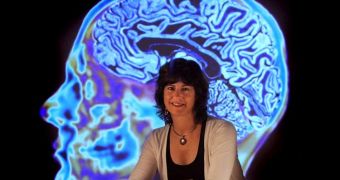The California Institute for Regenerative Medicine (CIRM) announced yesterday, October 21, that it will award some $9.35 million in grant money to the Sue & Bill Gross Stem Cell Research Center at the University of California in Irvine (UCI).
They funds will go to a number of researchers, who are conducting investigations into developing treatments for conditions such as traumatic brain injury, retinitis pigmentosa and Huntington’s disease.
Developing stem cell-based treatments for all these conditions is the ultimate goal of the Center, say officials at the university. CIRM is now supporting its early stage translational research.
The scientists who got the grant money, Dr. Henry Klassen, Leslie M. Thompson, Brian Cummings and Aileen Anderson, are all based at the Center, and are all conducting stem cell research.
“I am delighted that CIRM has made these awards to my colleagues. It speaks to the breadth of outstanding stem cell research at UC Irvine,” explains Peter Donovan.
“The studies they will carry out on eye diseases, Huntington’s and traumatic brain injury could have wider implications for the use of stem cells to treat a variety of human diseases, disorders and injuries, and could have a major impact,” he adds.
The expert holds an appointment at UCI as the director of the Sue & Bill Gross Stem Cell Research Center. He adds that the total amount of CIRM funding for the university is now $71.85 million.
Throughout California, 12 research institutions were awarded grant money by the CIRM governing board. The 19 grants total an estimated $67 million.
The board placed high expectations in the research it funded, saying that potential drugs and other therapies need to be developed as a direct result. CIRM officials want as many products forwarded to the US Food and Drug Administration (FDA) for clinical trials as possible.
Klassen, an UCI assistant professor of ophthalmology, will use the $3.85 million he go to conduct research into how to use stem cells to cure the inherited form of blindness called retinitis pigmentosa.
People suffering from the disease gradually lose the light-detecting cells on their retina, and eventually go blind. There is no cure against the condition at this point.
“The eye is an important proving ground for stem cell-based therapies and provides a stepping stone to many otherwise incurable diseases of the brain and spinal cord,” the expert says.
Thompson got a $3.8 million grant to develop methods of support areas of the brain susceptible to Huntington’s disease via stem cells.
This neurodegenerative disease is inherited, incurable and fatal. “These cells offer a possible long-term treatment approach that could relieve the tremendous suffering experienced by patients and their families,” the UCI professor explains.
Cummings and Anderson will use their $1.7 million grant to investigate options of using neural stem cells to treat traumatic brain injury. Accidents make about 1.4 million Americans suffer from this condition every single year.
“If successful, these lines would be potentially useful for treating a variety of other central nervous system disorders, including Alzheimer’s, Parkinson’s, stroke, spinal cord injury and multiple sclerosis,” says Cummings.

 14 DAY TRIAL //
14 DAY TRIAL //